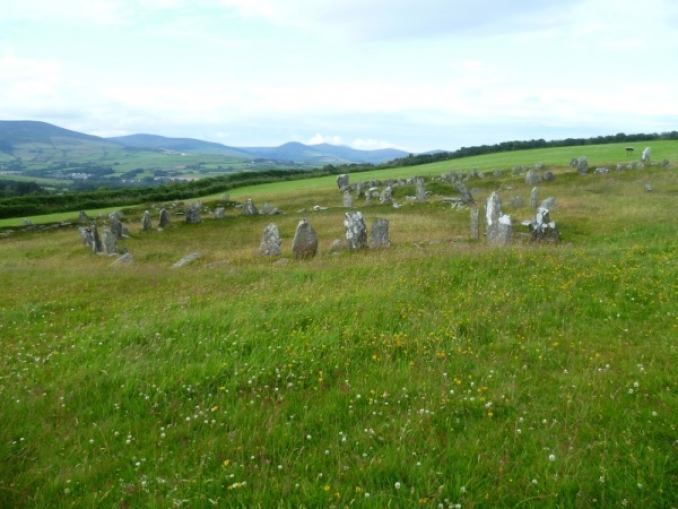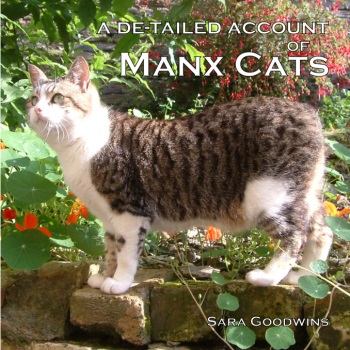Celtic Island Animals - Environmental Protection Crucial to all Celtic Peoples
The flora and fauna within all of the lands of the Celtic nations is something to be celebrated and cherished. Our environment is an important part of us as a people and needs to be as protected as equally as our language and culture. Our landscape and geographic location has played a pivotal role in our history, beliefs and recognition of ourselves. For our culture tells us that we are part of and completely tied to the lands in which we live or from whence we came.
The ancient Standing Stones, Circles and Cairns within the Celtic nations pay homage to our environment in one form or another. We Celts cannot but be responsible for the protection of nature and the environment. Our ancestors demand it of us and if you delve into your Celtic soul you will hear that deep voice that says ‘Protect the Environment’. Wherever it is in the world in which you live or work. Listen to that voice within yourself because it, as much as anything, ‘Makes you Celtic.’
The Celtic lands of north Western Europe have given rise to exceptional opportunities for rare species to evolve and to act as sanctuaries for bird and marine life to flourish. This is particularly so on more remote islands within our Celtic sphere. In addition to Isle of Man, one of the six Celtic Nations, there are also many islands of various sizes around the coasts of Brittany, Cornwall, Wales, Scotland and Ireland. On some of these islands relative isolation over many centuries resulted in animals unique to these islands developing and being bred as livestock; although in many cases breeding programmes now exist in other parts of the world. Here are just a few examples of those distinct and unique animals native to some of the islands off our Celtic coasts.
Shetland
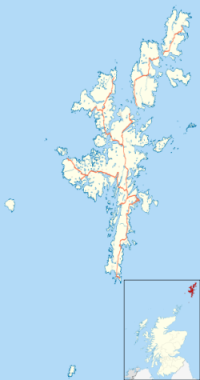
Shetland (Scottish Gaelic: Sealtainn) is made up of about one hundred Islands of which sixteen are populated. The main island is known as Mainland where the capital of Shetland, Lerwick, is located. The islands are about fifty miles northeast of Orkney and one hundred and seventy miles southeast of the Faroe Islands. To the east of Shetland is the North Sea and to the west the Atlantic. Shetland has been subject to strong Scandinavian influences over the centuries and did not become part of Kingdom of Scotland until 1471. Along with Orkney they formed part of the Norse lands known as Norðreyjar (Northern Isles). Norwegian law was not abolished in Shetland until 1611 and the Norse based language of Norn continued in common use for over two centuries after that. The Norse influences on the life and peoples of the islands of Orkney and Shetland remain clear today. The settlement of Orkney and Shetland did not start with Viking migration. Throughout the islands there is evidence of inhabitants from at least the Neolithic, Bronze Age and Iron Age through to the Pictish period.
Shetland Pony
As its name points out the Shetland Pony is a breed that originates from Shetland. The Shetland Ponies are sturdy, have a thick coat, short legs, standing at a minimum of 7 hands (28 inches) and a maximum of 10.5 hands (42 inches) and noted for their intelligence. They are suited to the environment of the Shetland Islands and it is thought that small horses have been kept on the Shetlands since the Bronze Age. The distinct Shetland type of pony is likely to have been a hybrid of Scottish and Scandinavian ponies. What is clear is that the Shetland Ponies size, coat and body shape were perfect for the climate of the Islands. They had to deal with an often hostile environment, surviving a cold climate and difficult grazing conditions. They change their coats according to the season; short in summer and double thickness in winter. Shetland’s are long lived, many beyond 30 years. The breed were invaluable to the Shetland Islanders who relied on the strong pony (the strongest of all the horse breeds) for transporting people, peat, seaweed and other goods as well as playing a part in cultivation. Even the fishermen used hair from the tails of the ponies for their lines.
Today the Shetland Pony can be seen throughout the Shetland Isles. They are a magnificent example of a breed that evolved in relative isolation and adapted to the environment in which they lived.
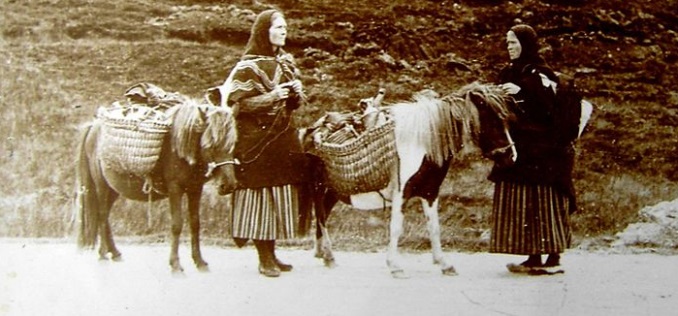
Shetland Sheep
There have been sheep kept on Shetland since Neolithic times. These ancient sheep were similar to the Soay sheep found in St Kilda and one the Northern European short tailed sheep group. When Norwegian Viking settlers arrived on the islands they brought with them other breeds to add to the native stock. Shetland Sheep share similar characteristics to sheep found in south western Norway. Shetland Sheep can come in a variety of patterns and colours that bare descriptive names derived from Norn the language formerly spoken on Shetland and Orkney and linked to the Norse language. The sheep are noted for their high quality meat and soft wool. The breed is small and the rams have two horns and the ewes are most commonly polled.
Orkney
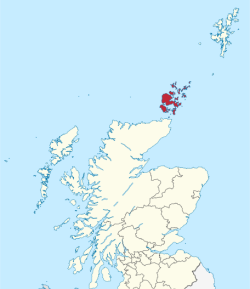
Orkney (Scottish Gaelic: Arcaibh) has been inhabited since Mesolithic times. Along with Shetland from 875 AD until 1471 AD (when they became part of the Kingdom of Scotland) they also formed part of what was known to the Norse as Norðreyjar (Northern Isles).
The Orkney Vole has been on the islands for over 4000 years. Found on five islands of the approximately 70 islands of the archipelago; Mainland, Sanday, Westray, Rousay and South Ronaldsay the Orkney Vole is unique to the islands. How the animal, whose closest relatives are natives of the Balkan states, came to the Orkney Islands is not known, although it is thought that they were introduced by humans in Neolithic times. They are preyed upon by Orkneys short eared owls and hen harriers. Probably the biggest threat to these Voles though is modern farming practices. They are larger than the common vole and have a blunt rounded snout and stocky body.
Hebrides/Innse Gall
The islands have been inhabited since Mesolithic times (between about 10,000 BC and 5000 BC). Ancient monuments stand throughout the islands, built by the ancestors of the Celtic people who now live there. The Hebrides are comprised of two island groups, the Outer Hebrides (Scottish Gaelic: (Na h-Eileanan Siar) and Inner Hebrides (Na h-Eileanan a-staigh) located off the north west of Scotland.
The Hebrides formed part of the Norse kingdom Suðreyjar (Southern Isles) from the 9th to 13th centuries. The Southern Isles forming the Kingdom of Mann and the Isles (sometimes known as The Kingdom of the Isles) consisted of the Hebrides, the islands in the Forth of Clyde and the Isle of Man. The Northern Isles of Shetland and Orkney were known to the Norse as Norðreyjar.
Soay Sheep
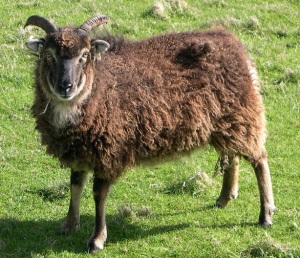
Soay Sheep are from the island of Soay (Scottish Gaelic: Soaigh). Soaigh is in the island group of St Kilda (Scottish Gaelic: Hiort), the furthest west of the islands of the Outer Hebrides (Na h-Eileanan Siar). Fifteen of the Outer Hebridean islands are inhabited. Soaigh is the westernmost island in Scotland. Soiagh’s name is derived from the Old Norse for Island of Sheep. There are three other islands in the St Kilda archipelago, Hiort, Dùn and Boraraigh. St Kilda was permenanty inhabited since the Bronze Age, but all of its remaining population were evacuated from Hiort in 1930.
The Soay Sheep is one of the Northern European short-tailed breeds that are thought to date back some six million years. They can be black, brown or blonde with a white underbelly. The breed is small, hardy and agile. Their colouring give them the name Lachdann in Scottish Gaelic cognate with Loaghtan (the name derived from Manx Gaelic for a breed of sheep native to the Isle of Man). The Soay ewes are polled, scurred or horned and the rams’ scurred or two horned. The meat from the sheep is tender and low in cholesterol and the wool is fine in texture.
Boreray Sheep
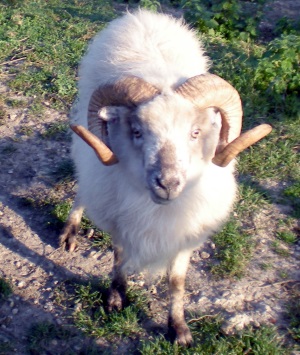
The Boreray Sheep is a native sheep of St Kilda (Scottish Gaelic: Hiort) in the Scottish Outer Hebrides (Na h-Eileanan Siar). A different breed that the Soay, also native to St Kilda, Boreray Sheep are from the neighbouring island of Boraraigh. This unique breed is a descendant of the now extinct Scottish Tan Face with an added mixture of Hebridean Blackface. Some of the sheep are dark in colour but most are creamy white and naturally shed their fleece. On their legs and faces are black, brown or speckled markings. Mostly bred for meat, their wool, which is rough in quality, is also used. Boreray Sheep are small and one of the Northern European short-tailed breed which is a group of sheep breeds from Scandinavia, Ireland and British Isles. Thought to be the first sheep brought to Europe in the Neolithic Age and dating back some six million years.
Hebridean Sheep
The Hebridian Sheep are from the Hebridies (Scottish Gaelic: Innse Gall). They are another of the ancient North European short-tailed breed. The Hebridean sheep are relatively small, with black or dark brown wool. Males and females commonly have two or more horns although ewes may be polled or scurred. The faces and legs of the breed are free of wool and covered with glossy black hair. The breed died out on its native Hebridies, the last being on the Outer Hebridean island of Uist (Scottish Gaelic: Uibhist). However, some had been taken, bred elsewhere and have now been re-introduced to the Hebridies.
St Kilda Field Mouse
The St Kilda Field Mouse is unique to the islands of St Kilda (Scottish Gaelic. Hiort) in the Outer Hebrides (Na h-Eileanan Siar). It is thought to have arrived on the islands on the boats of Vikings over a thousand years ago. The St Kilda mouse is larger than field mice found on mainland Scotland due the lack of predators on the islands. The mouse is mainly brown and lighter underneath with black eyes, small peaked ears. The St Kilda mouse is an omnivore.
Isle of Man/Mannin
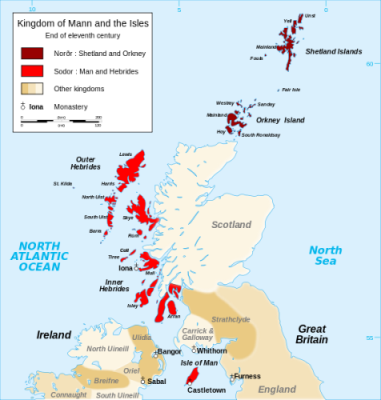
Isle of Man (Manx: Mannin) lies in the Irish Sea to the southwest of Scotland, northwest of Wales and to the east of Ireland. Those who come from the island are known as Manx and the historical language native to the island is Manx Gaelic. The cultural influences for the island originate from the indigenous Celtic peoples. The Vikings arrived in the Island around 800 AD and the fusion of cultures took place which is still evident in the archaeology, language and place-names and Parliamentary traditions of the island. Along with the Hebrides and the islands in the Forth of Clyde it also formed part of Norse kingdom Suðreyjar (Southern Isles) known as the Kingdom of Mann and the Isles.
Manx Loaghtyn/Loaghtan
The Manx Loaghtyn or Loaghtan sheep derived its name from the Manx Gaelic Lugh Dhoan which translates into English as Mouse Brown, describing the sheep’s colour. The sheep is unique to the Isle of Man and is a very distinctive and hardy breed that adapted to the often difficult weather conditions of the Manx hills. It is bred for its meat and wool. The meat is dark in colour and said to be both low in fat and cholesterol. It is noted that only the Loughtan sheep bred on its native Isle of Man has the truly complex flavour that come from being fed on local grain and grazing on the natural herbs and grasses of the Manx hillside. Loaghtan wool is also highly regarded and valued for its softness and natural colour.
Originating from northern European short tailed sheep breeds the Loaghtan is very distinctive. They normally have four horns, but some have two or six. Loaghtan’s are small without wool on their face or legs. Dedicated breeders have ensured the survival of this rare sheep.
Manx Cat
The Manx Cat (Manx Gaelic: Kayt Manninagh) are a breed of tailless cat native to the Isle of Man (Mannin). This ancient cat is the result of many hundreds of years of being bred in isolation on its native Island home situated in the middle of the Irish Sea. No-one really knows how it developed its distinctive look. It is a recognised breed and in addition to having no tail the cat has larger back legs than forelegs with powerful hindquarters, a round head with large rounded eyes. It comes in both short and long haired varieties. It is noted for its intelligence, friendliness and loyalty, making it a popular family pet. Good hunting abilities make it popular with farmers and others who seek to keep the rodent population in check.
There are many myths legends about how the Manx Cat lost its tail. In the Isle of Man some think that they are the offspring of an ancient goddess and so sacred. They even have one of their number who is a King of all the Manx Cats. As an owner of such a cat you will never know that you have royalty living under your roof. As the cat will only take on his regal powers when out at night when his owners sleep. Another legend is that Noah shut the door of his Arc and a cat that was not quick enough to get on had his tail trapped in the door. There are many other legends relating to this ancient breed.
These are just some of the examples of unique native animals that can be found within the Celtic islands. Throughout the Celtic Nations of Cornwall, Brittany, Wales, Isle of Man, Scotland and Ireland there are examples of all kinds of flora and fauna that though not necessarily unique, thrive in favourable environments that continue to need to be protected.
Further Information
An Taisce/The National Trust for Ireland
The Hebridean Trust/Urras Innse Gall
The Isle of Scilly Wildlife Trust
- Pan-Celtic
- English
- Log in to post comments


